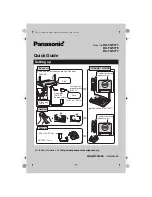
Spectralink 84-Series Series Wireless Telephones Administration Guide
1725-86984-000_P.docx
September 2016
118
Expanded Macros
Expanded macros are prefixed with the ^ character and are inserted directly into the local
directory
contact
field. For more information, see Local Contact Directory.
Special Characters
The following special characters are used to implement the enhanced feature key functionality.
Macro names and macro labels cannot contain these characters. If they do, you may
experience unpredictable behavior.
! The characters following it are a macro name.
' or ASCII (0x27) This character delimits the commands within the macro.
$ This character delimits the parts of the macro string. This character must exist in pairs.
^ This character indicates that the following characters represent the expanded macro
(as in the action string).
Example Macro
The action string:
$Changup$*444*$P1N4$$Tinvite$$Cwaitconnect$$P2N3$$Cpause2$$Tdtmf$$Ch
angup$
is executed in order as follows:
1
The handset terminates any active call.
2
The handset receives digits *444*.
3
The user is prompted for 4 digits. For example,
1234
.
4
The handset issues a new call to *444*1234 using the INVITE method.
5
The handset waits until the call connects before processing the macro further.
6
The user is prompted for 3 digits. For example,
567
.
7
The handset pauses for 2 seconds
8
The handset sends the collected digits, 567, using DTMF tones.
9
The active call is disconnected.
Because line keys and their functions are linked to fields in the directory file, a macro name you
enter in
efk.list.x.mname
must match the name you enter to the
contact (cn)
field in
the directory file. The macro name you enter in the (ct) field of the directory file must begin with
the ‘!’ prefix. The following example directory file shows a line key configured with Call Park, Call
Retrieve, and a speed dial contact Lisa Woo.
















































